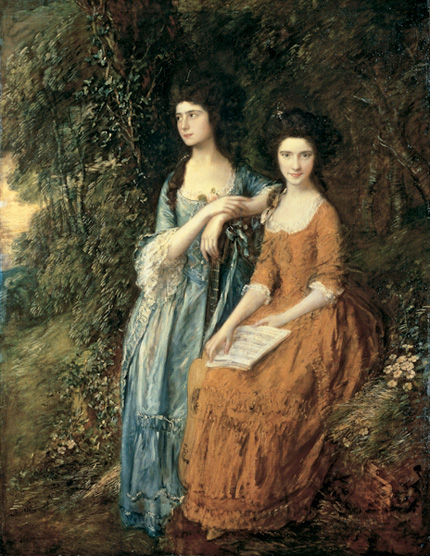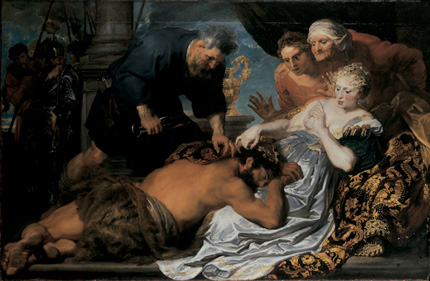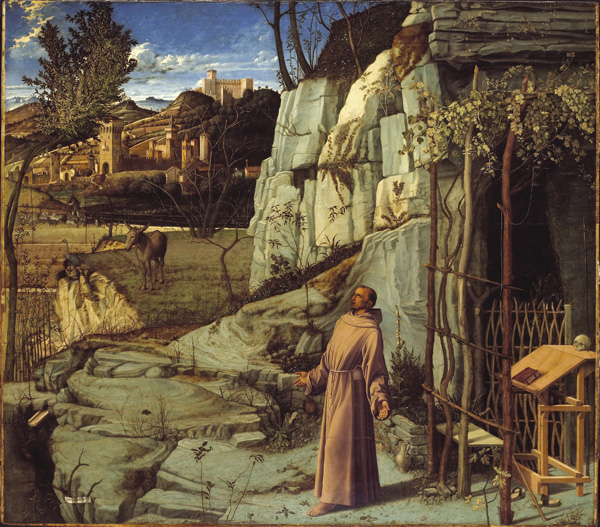
Elizabeth and Mary Linley — The Linley Sisters / Oil on canvas by Thomas Gainsborough (1727–1788)
Living in New York, flanked by some of the best museums of the world we often tend to forget that our city is home to some of the best small collections as well. Last Sunday I spent some time reacquainting myself with the Frick Collection and I was reminded just how much I enjoy this museum.
My main reason for going was to see The Linley Sisters which will be on exhibit until the end of the month, but even if you can’t get there by then there are hundreds of other marvelous gems that may be calling you.
First of all, The Frick is easy to get to. Just a few block up from the Hunter College station on the #6 line, you can be there in no time from wherever you are.
Secondly, the museum is right on the park midway between the Central Park Zoo and The Boathouse so it’s a lovely part of town . . . you can make a day of it – plan on taking a boat ride before or having a nice dinner afterward.
Thirdly, if big museums aren’t your thing, then the Frick is just right for you. Personally, while I’m a lover of art I do find myself getting a little overloaded on, let’s say, too many Dutch Masters, and thus wandering from room to room, only to then find myself suddenly awash in Holy Relics. Then, after another 20 rooms of those, you’re in Chinese Vases and totally lost. This will not happen to you at the Frick. Not only are styles, periods and countries mixed together but if you find yourself completely uninterested in a particular room you won’t get lost in the maze when trying to get to the next one. Since The Frick was once the home of Henry Clay Frick (1849-1919), a steel industrialist, the layout is much more inviting and manageable. And since this was Mr. Frick’s personal collection of paintings, sculptures, and decorative art, it’s displayed the way he chose to live with these pieces, arranged in a manner that made sense to his own aesthetic, not one that followed any rules of a particular artistic period.

Frick Garden Court
The first thing you notice upon entering the Frick is the beautiful Garden Court with its marble columns, lapping fountains and serene pools. If you come early enough – or during a time when there’s not too many people – you can just sit here and enjoy the beauty of this place before taking in the works of art.
I highly recommend attending the 15 minute film that explains the history of the Frick Collection which is shown in the large screening room. Narrated by the curators of the collection it explains how Mr. Frick built his fortune, how the house came to be constructed, and how he amassed his collection. You’ll have a much better appreciation for the rooms if you take the time to learn the history behind them.
One of my favorite paintings (which is also on loan and only around till the 30th of this month) is the powerful Samson and Delilah by Van Dyck. Not only was there so much emotion in the faces of the subjects in the painting, but there was an amazing interplay of strength and vulnerability in this sleeping Samson that made me wish I could wrench those devious scissors from the hands of that barber.
Another painting which had me absolutely captivated was St. Francis in the Desert by Giovanni Bellini. (Follow this link for a zoomable image where you can really engage with the painting on line). There’s something about this painting in person that was simply astonishing – I was something my fellow contributor Sarah V. Schweig once describe as “museumed” by this painting and I really can’t even say why. All I know is, I could have stood there for hours if my feet hadn’t started to hurt.
While the Frick’s entrance fee is a bit pricey for some ($18) they have a “Pay What You Wish” period on Sunday that runs from 11am to 1pm and I saw couples give as little as 2 dollars. Stephen and I ponied up a sawbuck each but certainly “Pay What You Wish” means just that, so if you’re low on cash but in need of some good museum time, head on over to the Frick on any given Sunday and get your museum on.
~~~
The Frick Collection1 East 70th Street
New York, NY 10021
Phone: 212-288-0700 For general information about visiting, see Collection.
For entry fees, see Admission and see Hours for opening times.





{ 0 comments… add one now }